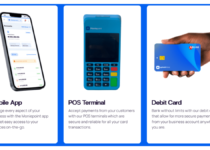Opay Failed Transactions: How to Cancel Pending Transaction on Opay
Opay is a popular mobile money platform in Nigeria that allows users to send and receive money, pay bills, and buy airtime. However, like any other payment platform, Opay can sometimes experience failed transactions. This can be frustrating for users, especially if they have been debited for the transaction but the recipient has not received the funds.
In this article, we will guide you through ways you can cancel a pending transaction on Opay, and show you reasons for Opay failed transactions. Ready to start? Read along.
Table of Contents
Reasons For Opay Failed Transactions
While the platform aims to provide a seamless and efficient payment experience, like any digital payment system, there can be instances of failed transactions. These failures can arise due to various reasons, some of which are:
- Insufficient Funds: One of the most common reasons for a failed transaction is the lack of sufficient funds in the user’s OPay wallet or linked bank account. If the user attempts to make a payment or transfer an amount greater than the available balance, the transaction will fail.
- Connectivity Issues: Mobile payment services depend on stable internet connections to process transactions in real-time. If the user’s device or the OPay system encounters network connectivity problems, it can lead to transaction failures.
- Incorrect Details: Providing incorrect recipient details, such as a wrong phone number or account number, can result in transaction failures. It is essential to double-check the recipient’s information before initiating a transfer or payment.
- Expired or Blocked Card: If the user’s debit or credit card linked to the OPay account has expired or is blocked by the issuing bank, transactions may not go through.
- Technical Glitches: Despite rigorous testing, technical glitches can sometimes occur in any digital payment system. This could be due to software bugs, server issues, or maintenance activities.
- Transaction Limitations: OPay may impose certain transaction limits for security reasons. If a user exceeds these limits, their transaction could fail.
- Account Verification: OPay might require users to verify their accounts before enabling certain features like higher transaction limits. If the account is not verified, transactions could be declined.
- Payment Gateway Issues: OPay relies on payment gateways and financial institutions to process transactions. If there are disruptions or problems with these third-party services, transactions may fail.
- Security Measures: In some cases, if the system detects suspicious activity or potential fraud, it may block transactions to protect users’ accounts.
- System Downtime: Scheduled maintenance or unexpected downtime of the OPay platform can lead to temporary transaction failures.
- Incompatibility with Merchant: Some merchants’ systems may not be compatible with OPay’s payment gateway, resulting in failed transactions when trying to make a purchase.
- User Errors: Human errors, such as mistyping the transaction amount or entering incorrect PINs or passwords, can also cause transaction failures.
Tips To Avoid Failed Transaction On Opay
- Ensure sufficient funds are available in the OPay wallet or linked bank account.
- Verify the accuracy of recipient details before initiating any transfer or payment.
- Check for active internet connectivity on the user’s device.
- Confirm that the payment method (e.g., debit) is valid and not expired or blocked.
- Reach out to OPay customer support for assistance if the issue persists.
Keep in mind that the reasons for failed transactions can evolve over time as payment systems and technologies advance.
Read Also: FCMB Customer Care Whatsapp Number, Phone Number, Email Address and Office Address
How to Cancel Pending Transaction on Opay
There are two primary methods to cancel a pending transaction: through the OPay app and by contacting OPay customer support. Here’s a summary of the steps and considerations for each method:
Through the OPay App:
- Open the OPay app on your mobile device.
- Navigate to the “Transactions” or “Activity” tab, where you can find a list of your recent transactions.
- Locate the pending transaction you wish to cancel.
- Tap on the transaction to view its details.
- Look for a “Cancel” or “Refund” button and tap on it.
- Confirm your decision to cancel the transaction when prompted by the app.
- Keep in mind that the transaction must still be in a pending state for this option to be available.
Through OPay Customer Support:
- Contact OPay customer support through the available channels, such as phone, email, or live chat.
- Provide the relevant details of the pending transaction you want to cancel, including the transaction ID or other transaction-specific information.
- Request the customer support representative to assist you in canceling the pending transaction.
- Follow any instructions provided by the customer support team.
Considerations:
- You can only cancel a pending transaction that has not been processed by OPay. Once the transaction is successfully processed, it cannot be canceled through the app or customer support.
- Depending on the specific policies of OPay and the type of transaction, there may be a fee associated with canceling a pending transaction. Make sure to check for any applicable charges before proceeding with the cancellation.
- It is essential to act promptly when attempting to cancel a pending transaction to increase the likelihood of a successful cancellation. As transactions are typically processed in real-time or quickly, the window for canceling a pending transaction may be limited.
- If the pending transaction is related to a payment made to a merchant or a third-party service, refunds may be subject to the merchant’s refund policies and processing times.
Remember that the process and features of mobile payment apps like OPay can evolve over time, so it’s always best to refer to the most current version of the app and any support documentation for the latest information on canceling pending transactions.
FAQ
Can I cancel a transaction that is still pending?
Yes, you can generally cancel a transaction that is still pending on OPay. If the transaction has not been processed and is in a pending state, you have the option to cancel it through the OPay app. Open the app, go to the “Transactions” or “Activity” section, find the pending transaction, and tap on the “Cancel” or “Refund” button if available. However, once the transaction is successfully processed, it cannot be canceled, and you may need to explore other options, such as initiating a refund or contacting customer support.
2. Why is my failed transaction still pending?
A failed transaction may still show as pending due to various reasons. One possibility is that the system encountered a technical glitch or connectivity issue during the processing of the transaction, leading to its failure. In such cases, the status may remain as pending until it is resolved or automatically timed out. Additionally, some payment gateways and banks may take time to update transaction statuses, causing a delay in reflecting the failure.
How long will a failed transaction be pending?
The duration for which a failed transaction remains pending can vary depending on the specific circumstances and the payment processing system used. In most cases, pending transactions that have failed are automatically canceled or reversed within a short period, often within a few hours to a couple of days. However, if a pending transaction is not automatically reversed, it is essential to contact OPay customer support to initiate the cancellation manually.
How do I reverse an OPay transaction?
To reverse an OPay transaction, you need to follow specific steps based on the transaction type and status:
- If the transaction is still pending, you can attempt to cancel it through the OPay app. Open the app, go to the “Transactions” or “Activity” section, find the pending transaction, and tap on the “Cancel” or “Refund” button if available.
- If the transaction has already been successfully processed, you will need to contact OPay customer support for assistance. Provide them with the details of the transaction, including the transaction ID, date, and amount, and request a reversal or refund.
Can a customer reverse a transaction?
In some cases, a customer may be able to initiate a reversal or refund of a transaction. If the transaction is still pending and has not been processed, customers can usually cancel it through the OPay app, as mentioned earlier. However, once the transaction has been successfully completed, initiating a reversal or refund may depend on the specific policies of OPay and the merchant or recipient involved.
For transactions with merchants or third-party services, customers may need to reach out to the merchant’s customer support or follow the merchant’s refund process. In situations where there are issues with the transaction, such as a double charge or unauthorized payment, customers should promptly contact OPay customer support for assistance in resolving the matter.
Conclusion
OPay, like any other mobile payment platform, can experience failed transactions for various reasons, ranging from technical glitches to user errors. However, understanding the common causes of failed transactions can help users take necessary precautions to avoid such issues.
When it comes to canceling a pending transaction on OPay, users have two primary options: using the OPay app or seeking assistance from OPay customer support. By promptly identifying and addressing pending transactions that require cancellation, users can potentially prevent unnecessary inconveniences and financial complications.




